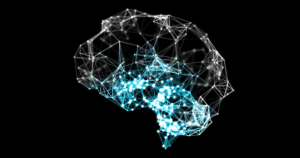
Neuroscience and AI have always been very separate in my mind. The motivation behind calling it a “neural network” is to create the illusion, or make stronger connections to this idea that the computer has “a brain”. The easiest way to explain the complexities of computers and answer the questions of why and how to the general population is to use magic blanket phrases like “oh it works like a brain making connections between things and processing complicated information”.
The distinction is how the brain receives and processes information. Input comes in from the sensory organs which take a physical stimulus (like light or heat) and create electrochemical signals that are in a “language” the brain understands. (It is essentially like data processing.) Then these signals are put through a filter… because humans are surrounded by constant stimulus. It’s like being able to pick out and follow your mom’s voice in a massive crowd at the grocery store or like seeing individual fruit on a bush as opposed to the image just bluring together.
Once the information is processed and filtered, that same filter decides how important the information is. Let’s say you are in an emergency situation and you are processing information… the color of the firefighter’s shoes is probably not important enough to be the primary focus in that situation. The information then gets stored based on importance… so think short-term memory, long-term memory, etc. Links are then formed based on relevance to other information already stored.
Let’s compare a Neural Network to this. Consider this idea that there is a big data/ training set of data… that information to some degree gets inputed in a way the computer understands. Kind of like how the physical stimulus are translated into electrochemical signals. I think the closest comparison would be coding the Network since coding is traditionally done in coding language so the computer understands and this coding language is not necessarily flowing like normal conversation.
This data then can get filtered. Maybe one way it does that is in the form of arrays. It makes information organized and can potentially have connections hard coded into it. (Think about this in terms of maybe a word being tied to a definition, there is a way to do that within an array for example).
The clear difference here between this neural network and say the brain is the prioritizing of information. This difference is so massive that it overrides all the similarities previously stated. The data is not put in a hierarchical form. The data is there, categorized… but there is no situational input to show which data is more important. Think back to that emergency example, the detail of the firefighter’s shoes would probably be forgotten, but in the case of a computer, that data would still be stored. The computer doesn’t “forget” like a brain would.
Citations:
http://www.teach-nology.com/teachers/methods/info_processing/